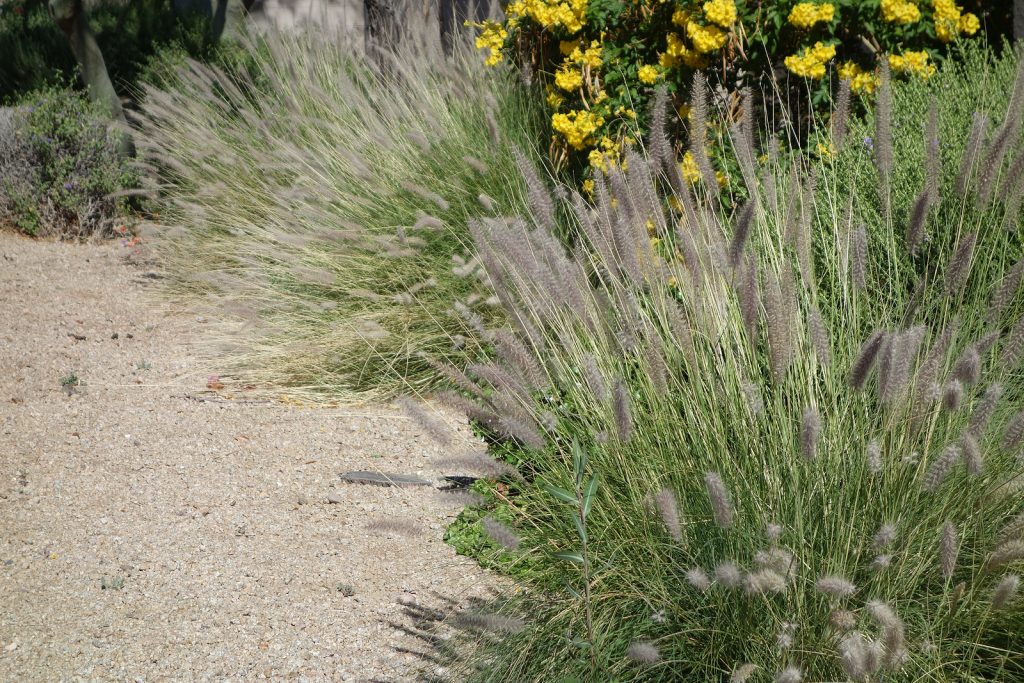What are the Benefits of Xeriscaping for Water Conservation and Drought Tolerance?

A beautiful garden often comes with a price — to you and the environment. It can be tempting to want lush, green foliage, even if you live in a dry climate or desert zone.
It’s t far easier to landscape for the climate you want, rather than the climate you have. And in turn, many a gardener spends up in monthly watering bills and high maintenance cost.
But there is a different way, and you probably never heard of it.
We’ll show you exactly what the xeriscaping method is, why you might want to give it shot, some tips and tricks for starting yours off on the right foot, and the easy way to cut its costs and routine maintenance needs even more.
What Is Xeriscaping?
Xeriscaping is a type of landscaping that focuses on water conservation using drought-resistant plants, and fill it in with efficient irrigation and water-saving techniques, and end up with a beautiful garden for very little water loss.
This may involve planting native species, arranging them by water use so that groups that need little water are planted together, and using mulch to keep all of it in the ground. Because it uses less water to maintain a landscape, xeriscaping can help conserve natural resources, lower water bills, and still make your garden look pretty great.
What are the Advantages of Xeriscaping?
And that’s where xeriscaping comes in. Here’s what you can look forward to when you begin landscaping for the landscape and climate you actually have: more conserved water, more tolerance to drought, more cost-effectiveness — and then some.
More Water Conservation
Growing drought-tolerant plants, xeriscaping also minimizes the need for excess watering. And, it also often includes designing factors that reduce water use, like mulching, grouping plants with similar water needs and using very effective irrigation systems.
In short: Less water used on your landscaping is more water conserved for the planet (a precious natural resource, remember) and of course, a lower monthly water bill.
Higher Drought Tolerance
And xeriscaped gardens are sired by more resilient gardens, as they’re designed to withstand a relative lack of water. It’s important to add xeriscaping to an area that is prone to droughts as it involves plants that are either native to the area or well conditional being native to areas with limited water.
The Lowest Maintenance
Prepare to have some free time on your hands. Xeriscaped gardens are super low maintenance, not just because the plants they use are locally adapted and said to be drought tolerant.
They’re also just not as hungry, so they need less fertilizing to remain on the feed, so to speak, for months on end. And those same xeriscaping practices of hauling in mulch, rocks and ground covers suppress weed growth and reduce the amount of mowing and other yard work needed.
Go Xeriscaping, Save Some Cash
It’s true: If your garden doesn’t require as much watering or upkeep, you will save some money. Xeriscaped gardens require far less water than traditional-slash-manicured gardens, and are generally created to be low-maintenance in addition to being designed for lower costs of watering, weeding and overall upkeep.
And you’ll have more in your pocketbook if you purchase native plants instead of non-native ones. And with xeriscaping, you don’t have to dig for a gigantic irrigation system either. It all adds up to some big savings.
Even Xeriscaped Gardens Can Be Beautiful
It’s time to redefine what we mean by a beautiful garden. Drought-resistant gardens can be every bit as lovely as flower and water-heavy gardens by using plants that come in all shapes and colors – many of which are native or adapted to the region where people live.” And those rock formations, mulch, stones and wood?
It’s a wonderful opportunity for a one-off design. Because most traditional gardens look alike, but every xeriscaped garden can look and be different. The sky’s the limit in terms of how to design yours.
Invite More Wildlife, Save the Planet
Because xeriscaping involves using native plants, it simply offers local wildlife food and shelter and helps support biodiversity. Mulch, rocks and other organic materials used in xeriscaping also save soil and protect the earth from runoff and erosion, which is super good for the wildlife and the planet. Minimizing pesticides and fostering organic gardening techniques practiced in xeriscaping provides a healthy life environment for bees and other wildlife, as well as nourishing soil for the earth. Throw in how much water you’re not using and it’s clear your xeriscaped garden is good for the planet as a whole.
Getting Started with Xeriscaping – Tips and Tricks
Eager to give xeriscaping a shot for yourself now that you know all of the advantages? Makes sense! Here are some tips and tricks to help you on your way. Even you may soon forget you ever liked it the old way.
Analyze Your Soil
Before You Begin Start by finding out what’s already in your soil by sending a soil sample to a local lab or using a test kit that reveals the pH of your soil and the amount of nitrogen, phosphorus and potassium in it. Learning these specs can help you select plants that will do well in your site.
Choose Your Plants Natively
When picking plants, go for those that are native to your area or that you know are tolerant of drought. One way to research plants native in your neighborhood is to visit your local dot gov, because in most counties, there are resources for locating local species. Alternatively, you can just search the engine.
Group Plants to Simplify Irrigation
The beautiful plants you just picked up for a good, local price? They’re about to get cozy. Water like-plants together, and experience years of conservation to come.
Reconsider that Lawn
Got a grass lawn, too? Consider reducing it. The lawn is frequently your largest water user in the yard! And if you are in fact going to cut back, replace your patch of grass with a larger xeriscape plot or a drought-tolerant ground cover.
Make It Mulch
Mulch is the moisture maven of your garden. In addition to holding water within the soil instead of losing it to evaporation into thin air, it also acts as natural fertilizer. Stronger moisture! > Stronger soil! For the price of one bag of mulch (or however many bags it costs).
In Praise of Rain and Shade
To kick your water conservation up a notch, consider the natural stuff. Harvest and use rainwater to water garden plants, and house-shading in your garden to reduce the water requirements of plants, like trees or suspending shade cloth. A hot, sunny day will dry up your soil faster than you can say “xeriscaping”!
